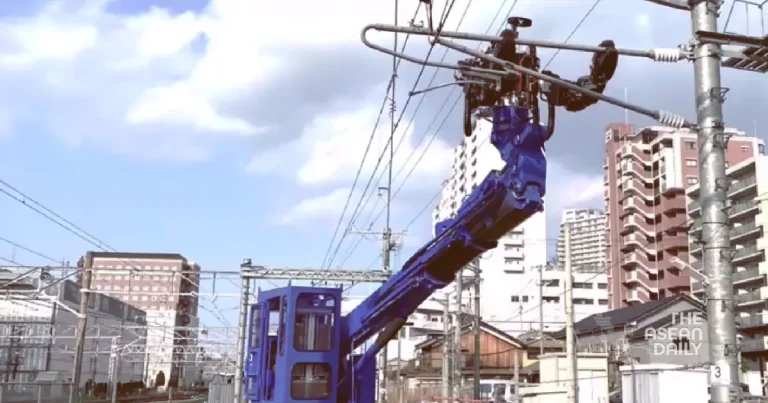4-7-2024 (TOKYO) West Japan Railway has introduced a behemoth of a machine that could have stepped straight out of a 1980s science fiction film. However, this imposing humanoid creation has been designed with far more mundane tasks in mind: painting and gardening along the company’s extensive rail network.
The gargantuan robot, which began its duties this month, is a striking sight. Mounted on a rail-capable truck, it boasts enormous arms and a disproportionately small head reminiscent of the lovable Wall-E, complete with oversized, coke-bottle eyes. Despite its intimidating appearance, the machine’s purpose is purely practical.
Operated from a cockpit within the truck, the robot’s ‘driver’ views the world through the machine’s eyes via an array of cameras. This setup allows for precise control of the robot’s powerful limbs and hands, enabling it to perform a variety of maintenance tasks with remarkable dexterity.
The robot’s capabilities are impressive. With a vertical reach of 12 metres, it can effortlessly manipulate objects weighing up to 40 kilograms. Its versatile arms can be fitted with various attachments, allowing it to wield tools ranging from paintbrushes to chainsaws.
To repair power lines, The West Japan Railway Company, also known as JR-West, has built a massive Gundam-style robot. pic.twitter.com/uVsC4HiCZc
— World of Engineering (@engineers_feed) May 7, 2022
Initially, the robot’s primary responsibilities will centre on trimming tree branches along railway lines and painting the metal frames that support overhead cables. These tasks, while essential, have traditionally posed significant risks to human workers.
West Japan Railway’s president, Kazuaki Hasegawa, outlined the company’s vision at a recent press conference. “We hope to eventually employ machines for all manner of infrastructure maintenance operations,” he stated. “This project should serve as a valuable case study in addressing the labour shortage facing our industry.”
Indeed, the introduction of this robotic worker is a direct response to Japan’s ageing population and the resulting workforce challenges.




